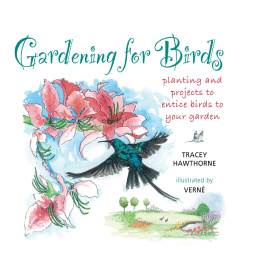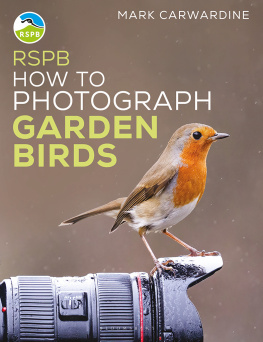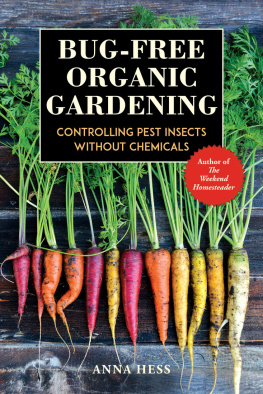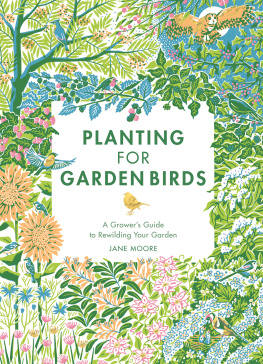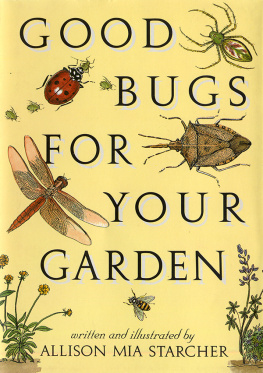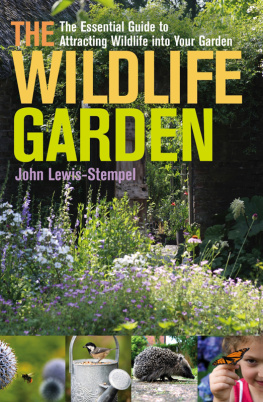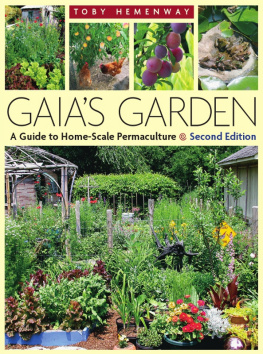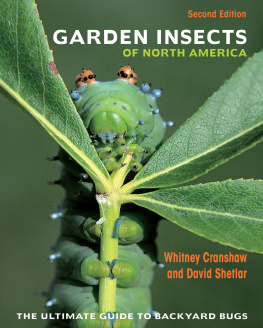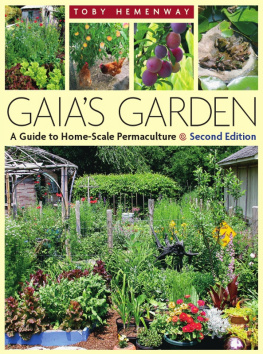Contents
Guide
Page List
GARDEN ALLIES
The Insects, Birds & Other Animals
That Keep Your Garden Beautiful and Thriving
FRDRIQUE LAVOIPIERRE
ILLUSTRATIONS BY CRAIG LATKER

To my father, Michl Lavoipierre,
inquisitive scientist and renaissance man,
who taught me to love nature and scholarship,
with particular attention to the insects.
And
From Craig, to Richard,
for his infinite patience.
CONTENTS
PREFACE
I have always loved gardens and insects. As far back as I can remember, I was peering into the heart of our backyard roses, stirring up leaf litter, and climbing the apple tree to see what lived within its broad branches. One early yet vivid memory is of sitting on the edge of my sandbox, patiently watching a monarch butterfly emerge in slow motion from its gold-spangled, jade-green chrysalis. Underneath my grandmothers hydrangea, an ant battle between two opposing colonies held me enthralled for hours. Garden leaf beetles looked like shining jewels to my wondering eyesand the holes they left in leaves, inconsequential. Insects and gardens were inextricable in my childhood world. As it turns out, they are inextricable in the world we all share.
When I began to garden seriously, I knew I did not want to use pesticides. I was horrified to find that a popular organic pest management book suggested using all kinds of insect-killing poisons. Instead, I studied my garden and watched shimmering hover flies lay their eggs among aphid colonies, after which the aphids slowly disappeared. I rejoiced at the parsley worm caterpillar that turned into a glorious swallowtail butterflywho can eat that much parsley anyway? At the community college where I studied horticulture, I gave the correct answers in my pest management course, then went home to the pleasures of my backyard menagerie. Later, I applied my garden learning to the nursery I owned. The natural enemies of pesky plant-munching insects became my friends and, fascinated, I later went on to learn more about them in my graduate studies.

Bluebird

Planting for beneficial insects

Home for bats
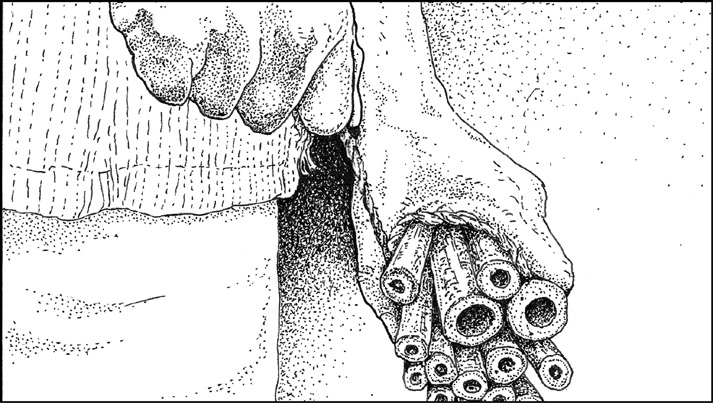
Bundling hollow reeds for bees
My garden was beautiful, humming with life, and the nursery prospered. It helped that I was, and still am, an inherently lazy gardener. When my son was a baby, and I noticed an infestation of whiteflies on my currant bushes, I thought, Oh, I really need to do something about this. But busy days went by and when I again visited that corner of the garden, the whiteflies were gone and I had a bounty of currants to enjoy! One day I noticed colonies of plump aphids jostling for space on a bank of lupines. Returning with my camera the next day, I discovered an army of soldier beetles feasting on them. Within a week, the aphids were gone and the soldier beetles had moved on.
Laziness, it turned out, paid off. So did curiosity. A close look at a mealybug colony revealed the camouflaged predator (a ladybug larva) in their midst. Solitary bees at a paths edge led me to leave a bit of bare soil for them to nest. My milkweed patches were a crowded natural-enemy nursery. A hand lens revealed that the hordes had descendedthe plants were festooned with orange aphids! The banquet attracted hunting and parasitic wasps, and the predatory larvae of lacewings, ladybugs, and hover flies, among other hungry insectsas well as the occasional bird. The ladybugs orange eggs, nearly the same color and size as the resident aphids, were the hardest to spot. My well-established milkweed tolerated the aphid invasion fairly well, and I now grow it in infrequently used corners of my garden, protecting new plants until they can withstand the aphids feeding on them.
Certainly, I have killed my share of pests, insect and otherwise. I did not learn how to develop a beautiful, ally-friendly habitat overnight. Sometimes, I still step in to disinvite unwelcome guests. Fortunately, most pesky guests have natural predators. And a healthy garden is a haven for diverse lifeplants, birds and other animals, fungi, microorganisms, and insects of all kinds. Such a garden is ultimately less work and better for the environment, and requires less, or ideally no, pesticides. As a bonus, by eliminating pesticides, we also protect the pollinators upon which we reply for much of our food.
Long ago, when I first began writing about natural enemies of herbivorous insects, my husband said to me, Why dont you call them garden allies instead? Perfect! And thats how I have come to think not only of the natural enemies of pests, but also the pollinators, decomposers, and other organisms that are part of any thriving garden. Now, I invite you to join me as I meander down the garden path, and meet some friends, both new and oldthe garden allies.
INTRODUCTION
When we try to pick out anything by itself, we find it hitched to everything else in the Universe.John Muir
Above, under, around, within, and beyond your plants, your garden is a constantly changing complex of connections. The garden food web is much like a spider web: gently pluck one strand and the vibration reverberates throughout the entire structure. Whether these organisms are friends or foes depends largely on how you, the gardener, perceive their place in your garden.
In these pages, we will explore a variety of common garden characters, large and small. Well look at what they do and why, and examine their interrelatedness with one another and with garden soil and plants. You will emerge a wiser, more effective steward of your land.
Its not enough to just grow pretty flowers for our garden allies. Many natural enemies and other garden allies dont even need pollen and nectar, but have different habitat requirements that we can supply. Garden design is just as important as careful plant selection, as it incorporates all aspects of supporting the organisms in a healthy garden. Observing and understanding what you see is a start. Lets dig in.
ACTORS ON YOUR GARDENS STAGE
W e will meet many garden allies in these pages, beginning with soil-dwellers and ending with birds and bats. You may learn things about them you never knew, including the myriad ways they can contribute to growing a healthy garden. Insects, however, are the stars of this book. Over 70 percent of this planets animal species are insects (some estimates are even higher), and they are essential to its continued health.
But we cannot talk about insects without first talking about plants, the original solar collectors. They are the only organisms, with very few exceptions, able to store the suns energy and convert it to food. Insects do a fantastic job of converting plant matter into food for other organisms. Thus, every animal on earth ultimately relies on plants for survivalsometimes directly (herbivores), sometimes indirectly (carnivores), and sometimes a bit of both (omnivores). Decomposers feed on all of the aforementioned. Additionally, most if not all insects are associated with at least one parasite that feeds on them; most have several. A majority of the following essays feature insects as leading actors in our gardens, as pollinators, decomposers, natural enemies, food for other insects and other creatures, and more. Everything, it turns out, is food for something else.



